Cutting lace - a mundane, but important, part of the job
We are no longer building saddle trees, but we have two videos about how Western saddles fit horses available on our westernsaddlefit.com website.
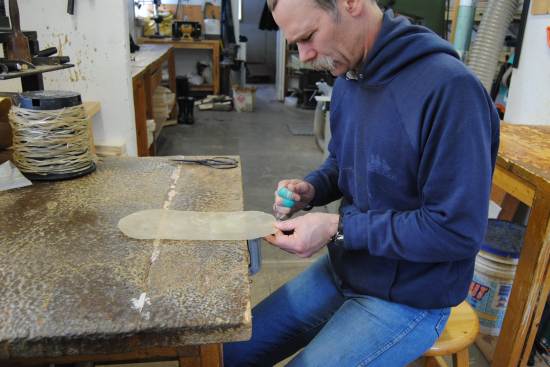
We use rawhide to lace our trees as we feel it is the best material out there for the job. And we make our own rawhide, usually out of deer hide, though we have used some calf hide too. But once it is made into rawhide, it doesn't magically transform itself into usable form, which is rather unfortunate as cutting lace isn't the most stimulating job in the world.
I spared you a picture of a black garbage bag. Why would I want to show you that? Because that is the next step in making lace after the dry rawhide has been cut into usable sized relatively circular (circular is used rather loosely here) sections of as even a thickness as is possible to get from the hide. (These are shown at the end of this post.) Then it has to be cased. This is done by dunking the hide in water for the right amount of time. How much is right amount? Thirty seconds to a minute, depending on the thickness of the hide. Basically, enough... Then the pieces are placed in a garbage bag to case overnight. When cased, they are still firm, but evenly wet all the way through. That makes them easier to cut smoothly.
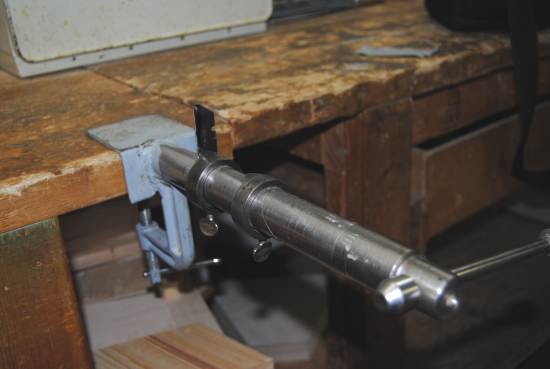
We have owned our lace cutter for many years. It was machined by a friend of a friend and has worked well for us. The blade is set in the cutter and then it is cranked tight. The collar is set the proper distance from the blade, depending if we are cutting cantle thongs or lace, and depending on the thickness of the lace.
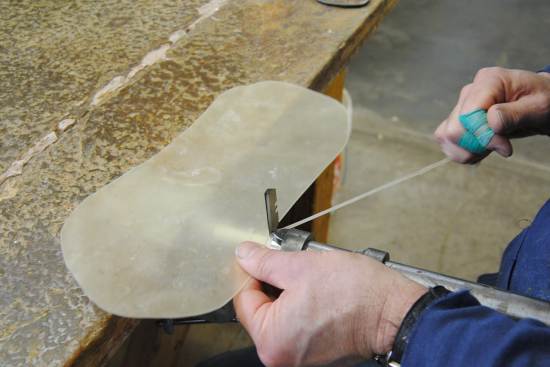
Then you start somewhere and go round, and round, and round, and round, and round, and round... well, you get the idea. Time consuming, and not overly mentally stimulating, as you can imagine. The tape on Rod's fingers is there for protection as you can really hurt your fingers if you do this for a while. I'm always amazed at rawhide braiders who can cut string 1/32 of an inch wide - and then bevel the edges!! Not my idea of fun at all.
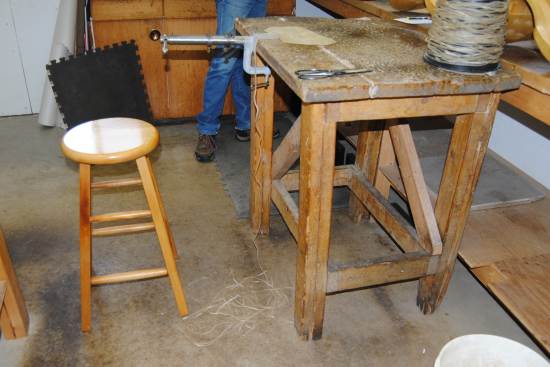
The aim is to make the lace as even and as long as possible. If weak spots show up due to damage to the hide or just thinner places in the hide, the lace is cut and another strand is started.
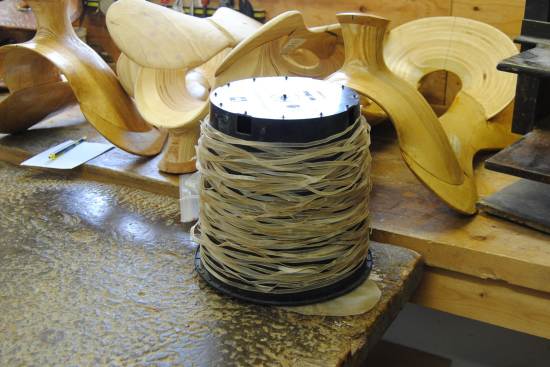
Once a full section of hide has been cut into lace, the pieces are wrapped around something to dry. We have used varnish cans and glue bottles in the past, but recently Rod found the old flower pots. They work the best, because they are slightly tapered and so the lace comes off easily when it has dried and tightened down a bit. And I think he even cleaned the dirt out of them the last time he used them... Once the lace is dried, it gets put into bags to wait till it is needed.
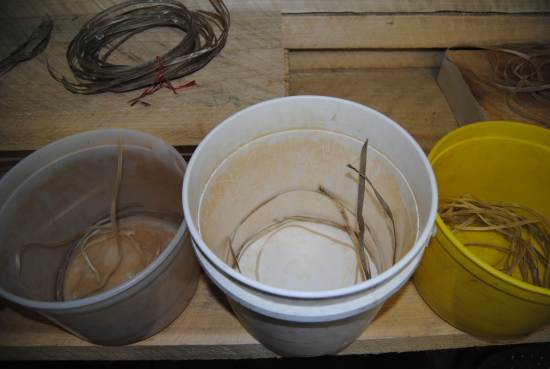
The night before Rod is going to rawhide trees, he cuts pieces the lengths he needs. He has two long pieces to stitch around the bars, a medium length piece for doing the gullet and shorter pieces for the cantle seams and fork seams when necessary. He also cuts two short pieces of the thicker, wider lace for cantle thongs. These all get put in buckets with water overnight so they are totally soaked through and "wet noodlish" to use the next day stitching the rawhide on a tree.
And - that's all folks!!
